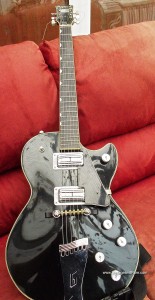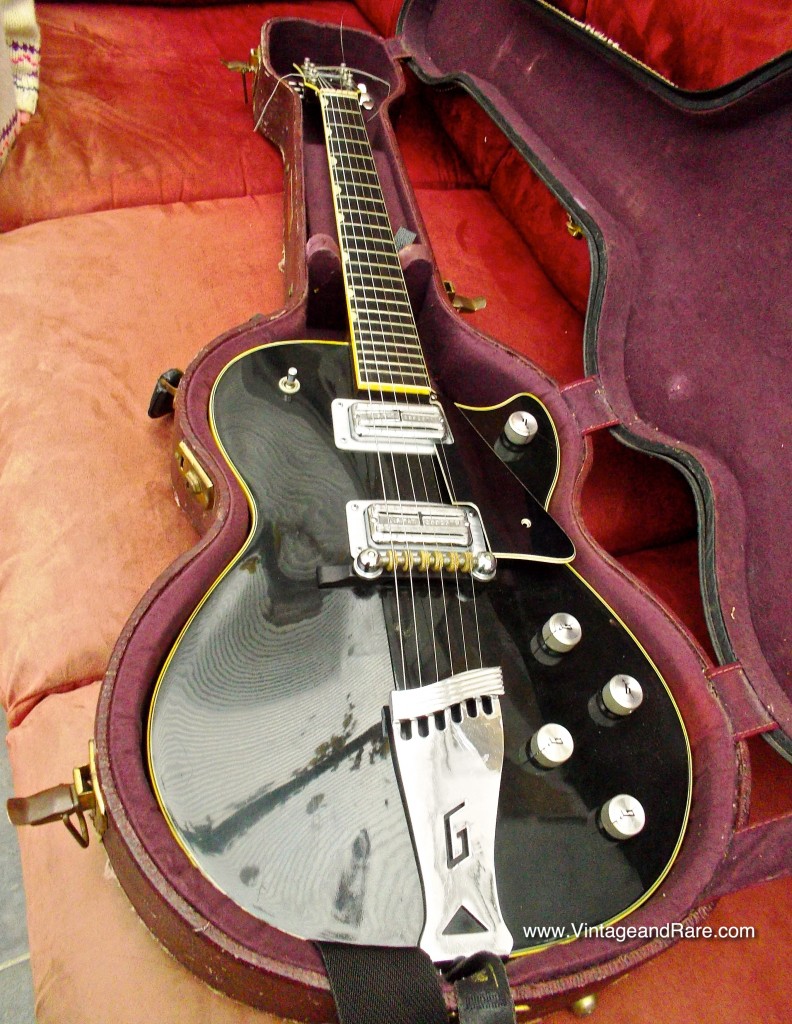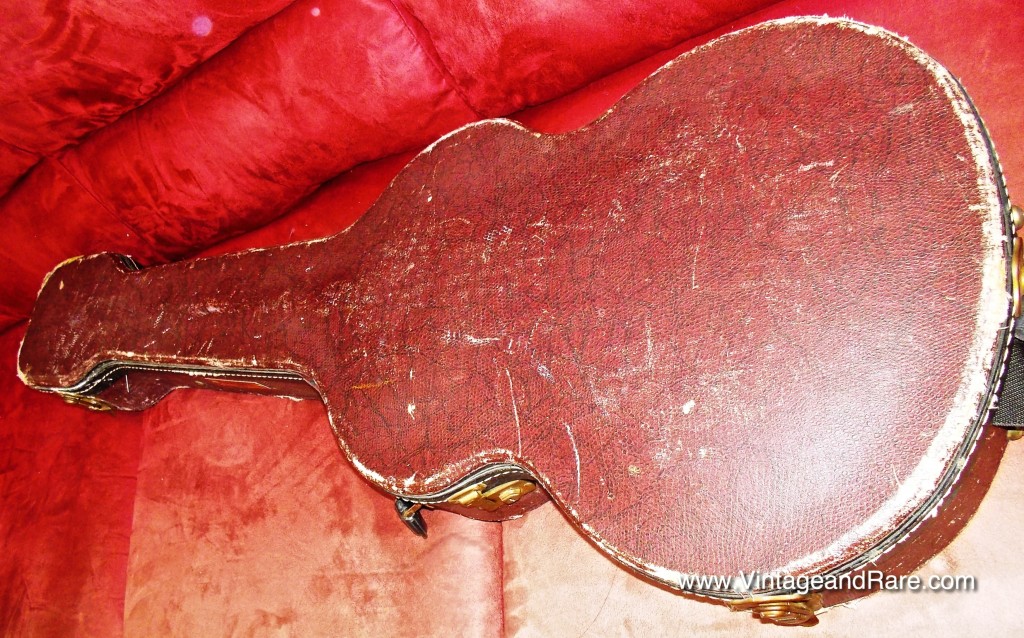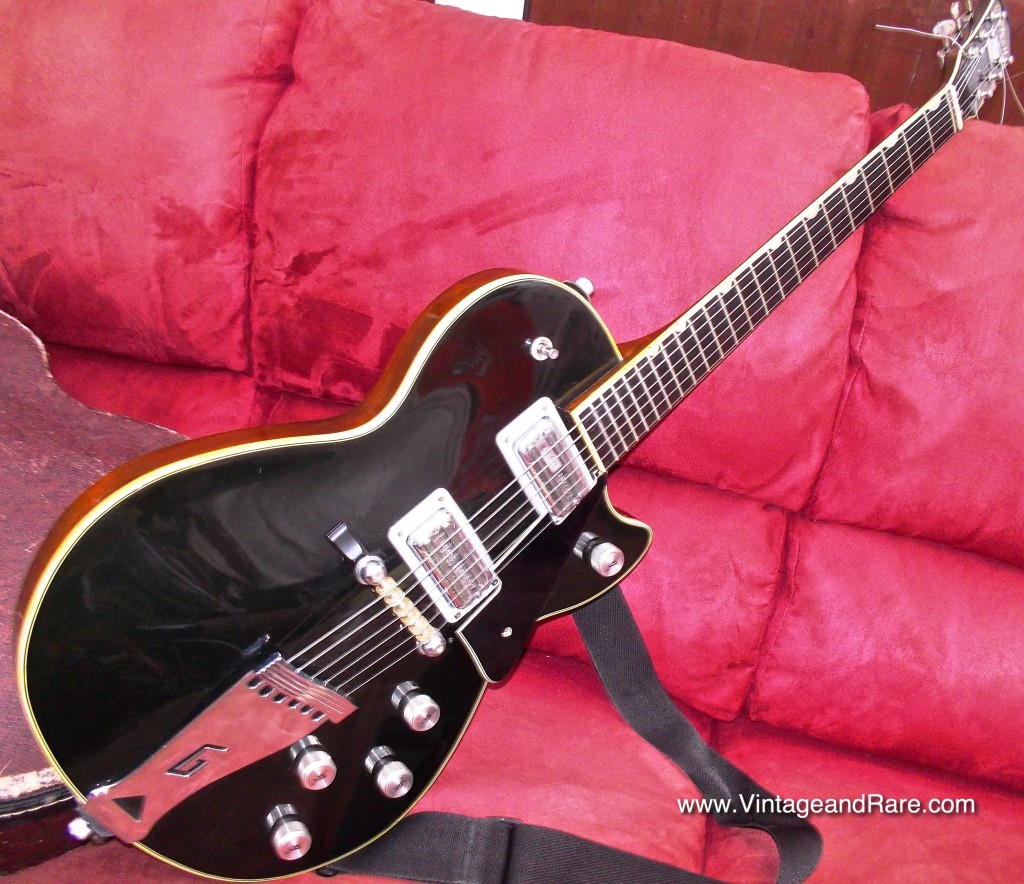How to date and identify your Fender instruments using serial numbers and production date stamps.
No one likes it when you forget their birthday and neither does your Fender. Well, don’t despair. For most of Fender’s production history they have applied serial numbers and production dates that can help you determine their production date (within a few years’ margin, at least).
Determining the date can also be important from a collector’s perspective, since the pre-1966 vintage Fender guitars are generally considered the most valuable. Fender was sold to CBS in the first week of January 1965, but already in late 1964 mass production was slowly being introduced, which gradually lowered quality and ultimately collectibility.
It is important to remember that Fender serial numbers are NOT conclusively chronological. Why is this? Back in the day, Fender made their serial number plates in big batches and the assembler simply grabbed a decal or more from the crate and slapped it on the guitar. As a result, many numbers and dates overlap. To get as close as possible to determining the age of your Fender, make sure to check all dates on both body, neck and pots.
The locations of the serial numbers and dates change from model to model and in some cases they have simply been omitted. Also, labeling techniques have changed with Fender owners, slightly adding to the confusion.
This article deals only with U.S.-made Fender guitars and basses from 1950 until today, since they are some of the predominant vintage guitars for sale on VintageandRare.com.
How do I find the serial number on my U.S.-made Fender?
Typically the serial number is penciled or stamped on the butt end of the heel of the neck of most guitars and basses. Neck dating can be useful in finding the approximate age of your guitar. Since the neck is only a component of the guitar, it could have been produced a number of years before the actual instrument was assembled, hence the date on the neck is not necessarily the production date of the whole guitar.
On early ’50s Stratocaster guitars serial numbers were stamped on the back vibrato cover plate.
On some Telecaster guitars the serial number is found on the bridge plate between the pickup and the saddles.
Fender neck dates from 1950 to today.
From the production of the first solidbody Fender guitars and until 1976, Fender tagged a production date at the butt of the detachable neck of their guitars. Only about half the guitars still carry any intelligible information here.
Below is a list of date formats and how they were marked on the neck-butts:
1950-1954: Hand-written below the truss rod adjustment at the butt end of the neck. Date format is usually M-D-YY and often features the woodworker’s initials as well.
1954-1959: Same as above, only the format is M-YY, leaving out the day.
First half of 1959: No markings for a period after a customer complained about an obscenity written on the neck butt. Markings start to appear again around mid-year.
Mid-1959-March 1962: Same as ’54-’59.
March 1962 to 1965: Dark blue or red ink stamps below the truss rod adjustment at the neck butt. Date format written as “XX MM-YY W”. The “XX” does not refer to the day; it is a code for the neck type (e.g. “02”=Stratocaster, “3/4″=3/4 scale Musicmaster). The “W” stands for neck width: “A” is the narrower, “B” is normal width, and “C” wider and “D”, though rarely seen, is the widest.
1966: the model number (the number stamped on the neck before the month) change (for example, “13”=Stratocaster).
1969: A new type of neck stamp of six, seven or eight digits was used on some models. The new stamp was usually green ink. Example: “529129B” (more info on reading there in the “nack stamps” section below.) This new green stamp was used simultaneously with the earlier “XX MMM-YY W” format. Models from this period could have either code system.
1972: A new eight-digit neck stamp was introduced colored either green or red. Example: “02033923”, as found on a Jazz Bass. From 1972 to around March 1973, this new system was used simultaneously with the previous “XX MMM-YY W”. Again, either stamp can occur on instruments from this era. A example of this is “02033923” found on a Jazz Bass. From 1972 through about March 1973, this new system was used concurrently with the previous “XX MMM-YY W” format. Again, a neck was stamped with either the new or the old date stamp, but not both. The model numbers change yet again (for example, “09”=Stratocaster). See “neck stamps” section below for more info.
April 1973-1980: Fender dropped the old style date stamp after March 1973 and continued with the new 8-digit code. April 1973 to 1980: After March 1973, Fender dropped the old style date stamp and continued to use the new style, 8-digit code. See “neck stamps” section below for more info..
1976 to present: All non-vintage reissue instruments have the serial number printed on the decal on the face of the peghead. The approximate production year can be determined from this (more about serial numbers will follow). Sometimes a date is stamped or hand-written on the butt of the neck. Vintage reissue instruments have the date on the butt end of the neck like the originals.
1980: Little glued labels with MM-DD-YY date stamps appear in the neck pocket, pickup cavity and/or back of the neck.
How to read the 1969-1971 neck stamps
The neck stamps on Fenders from 1969 to 1971 can be most logically translated by reading from right to left. For example, let’s take a Stratocaster with the serial number 279515 and the code 22384109B. Starting with the letter B, this is the same neck width code Fender has been using since 1962. The next number is the production year, in this case 9 = 1969. The next one or two digits are for the month, here 10 = October. The following three digits, here 384, could be a batch or lot number, or i could be the count for how many of this one instrument that was made within the month. Since Fender could probably produce more than 999 of any one type instrument in a month, it is more likely a batch or lot number. Finally, the first one or two digits of the code tells you which model you are holding; 22 being a Stratocaster.
There are some exceptions as you can see in this information provided by Mike Gagliano. A few Telecasters have shown up with neck codes that show a ’67 date and one with a possible ’68 date, while the rest of the guitar appears to be from ’69. If Fender used this code system as early as ’67, then we should be seeing more ’67 and ’68 guitars with the code stamped in green ink. A likely explanation is the use of leftover necks, which Fender is known to have done at several occasions. Other exceptions exist as well. For example, a 1970 Strat with the neck code 2231008B. The first “22” is the model (Strat), and the ending “B” is the neck width. But the “008” is not the month and year. There aren’t really any explanations to this, but it appears on the occasional Fender guitar from this era.
How to read the 1972-1980 neck stamps
The ’72 to ’80 eight digit code is similar to the ’69-’71 system that we just discussed. Example: a Music Master with serial number 595121 and the code 49002153. The first 6 digits are in pairs and the last two digits are standalone, giving us 49 00 21 5 3:
49 = model code (Musicmaster, Mustang, Bronco)
00 = neck code (rosewood fingerboard)
21 = week code (week 21)
5 = year code (1975)
3 = day of the week code (Wednesday)
1972-1980 model codes.
Model codes (first two digits):
01 = Precision Bass
02 = Jazz Bass
04 = Mustang Bass
08 = Telecaster Deluxe
09 = Stratocaster
13 = Telecaster, Telecaster Custom, Telecaster Thinline
49 = Musicmaster, Mustang, Bronco
1972-1980 neck codes
Neck codes (second pair of digits):
00 = rosewood fingerboard
01 = rosewood fingerboard
03 = fretted maple neck OR skunk stripe neck with rosewood board
10 = fretless maple neck
Fender dating charts and serial numbering schemes
The chart below shows the serial numbers used by Fender from 1950 to 1964. You may notice the significant overlap in numbers and years.
The only way to try to narrow the date range of your instrument is to remove the neck and check the butt end of the neck heel for a production date as mentioned above.
Some users may find the prospect of disassembling their Fender unsettling; if so, please refer to an experienced professional guitar tech for help.
| SERIAL NUMBERS |
PRODUCTION DATES |
| Up to 6.000 |
1950 to 1954 |
| Up to 10.000 |
1954 to 1956 |
| 10.000s |
1955 to 1956 |
| 10.000’s to 20.000’s |
1957 |
| 20.000’s to 30.000’s |
1958 |
| 30.000’s to 40.000’s |
1959 |
| 40.000’s to 50.000’s |
1960 |
| 50.000’s to 70.000’s |
1961 |
| 60.000’s to 90.000’s |
1962 |
| 80.000’s to 90.000’s |
1963 |
| 90.000’s up to L10.000’s |
1963 |
| L10.000’s up to L20.000’s |
1963 |
| L20.000’s up to L50.000’s |
1964 |
Fender was sold to CBS in January 1965. Serial numbering didn’t change immediately because the production methods and tools remained the same. The chart below shows Fender serial numbers from 1965 to 1976. Again, notice the overlap in numbers and years.
| SERIAL NUMBERS |
PRODUCTION DATES |
| L50.000’s up to L90.000’s |
1964 |
| 100.000’s |
1965 |
| 100.000’s to 200.000’s |
1966 to 1967 |
| 200.000’s |
1968 |
| 200.000’s to 300.000’s |
1969 to 1970 |
| 300.000’s |
1971 to 1972 |
| 300.000’s to 500.000’s |
1973 |
| 400.000’s to 500.000’s |
1974 to 1975 |
| 500.000’s to 700.000’s |
1976 |
In 1976 things were made a little easier. Fender introduced the “S”-prefix for guitars made in the 70’s, and the “E”-prefix for guitars from the 80’s as seen in the chart below.
| SERIAL NUMBERS |
PRODUCTION DATES |
| 76 + 5 digits
S6 + 5 digits |
1976 |
| S7 + 5 digits
S8 + 5 digits |
1977 |
| S7 + 5 digits
S8 + 5 digits |
1978 |
| S9 + 5 digits |
1979 |
| E0 + 5 digits
S9 + 5 digits |
1980 |
| E0 + 5 digits
E1 + 5 digits
S9 + 5 digits
E0 + 5 digits
E1 + 5 digits |
1981 |
In 1982, Fender introduced the U.S. Vintage series. These instruments have a “V”-prefix serial and the only way to definitively date these is, like with the earliest serial numbered guitars, by removing the neck and checking the butt of the neck for a production date, which may be stamped or written there. Again, if you don’t feel confident about taking apart your instrument, leave it to a pro.
| SERIAL NUMBERS |
PRODUCTION DATES |
| E1
E2
E3
V + 4,5 or 6 digits (U.S. Vintage Series except ’52 Telecaster) |
1982
(For U.S. Vintage Series, check neck date for specific year) |
| E2 + 5 digits
E3 + 5 digits
V + 4, 5 or 6 digits (U.S. Vintage Series except ’52 Telecaster) |
1983
(For U.S. Vintage Series, check neck date for specific year) |
| E3 + 5 digits
E4 + 5 digits
V + 4, 5 or 6 digits (U.S. Vintage Series except ’52 Telecaster) |
1984
(For U.S. Vintage Series, check neck date for specific year) |
Fender was sold again in 1985 to the existing owners, but the numbering remained the same.
Serial numbers from 1985 to 1990 are as follows:
| SERIAL NUMBERS |
PRODUCTION DATES |
| E3 + 5 digits
E4 + 5 digits
V + 4, 5 or 6 digits (U.S. Vintage Series except ’52 Telecaster) |
1985
(For U.S. Vintage Series, check neck date for specific year) |
| V + 4, 5 or 6 digits (U.S. Vintage Series except ’52 Telecaster)
|
1986
(For U.S. Vintage Series, check neck date for specific year)
|
| E4 + 5 digits
V + 4, 5 or 6 digits (U.S. Vintage Series except ’52 Telecaster)
|
1987(For U.S. Vintage Series, check neck date for specific year) |
| E4 + 5 digits
E8 + 5 digits
V + 4, 5 or 6 digits (U.S. Vintage Series except ’52 Telecaster)
|
1988
(For U.S. Vintage Series, check neck date for specific year) |
| E8 + 5 digits
E9 + 5 digits
V + 5 or 6 digits (U.S. Vintage Series except ’52 Telecaster)
|
1989
(For U.S. Vintage Series, check neck date for specific year) |
Keeping in line with the decennary numbering scheme, the “N”-prefix serial numbers were introduced in 1990. The numbers and decals were made years in advance, and some N9 decals (denoting 1999) were, in a blunder, affixed to some instruments in 1990. As a consequence, some 1990 guitars bear 1999 “N9” serial numbers.
| SERIAL NUMBER |
PRODUCTION DATES |
| E9 + 5 digitsN9 + 5 digits
N0 + 5 digits
V + 5 or 6 digits (U.S. Vintage Series except ’52 Telecaster)
|
1990
(For U.S. Vintage Series, check neck date for specific year) |
| N0 + 5 digits
N1 + 5 or 6 digits
V + 5 or 6 v (U.S. Vintage Series except ’52 Telecaster) |
1991
|
| N1 + 5 or 6 digits
N2 + 5 or 6 digits
V + 5 or 6 digits (U.S. Vintage Series except ’52 Telecaster)
|
1992
|
| N2 + 5 or 6 digitsN3 + 5 or 6 digits
V + 5 or 6 digits (U.S. Vintage Series except ’52 Telecaster) |
1993
|
| N3 + 5 or 6 digits
N4 + 5 or 6 digits
V + 5 or 6 digits (U.S. Vintage Series except ’52 Telecaster) |
1994 |
| N4 + 5 or 6 digits
N5 + 5 or 6 digits
V + 5 or 6 digits (U.S. Vintage Series except ’52 Telecaster) |
1995
|
| N5 + 5 or 6 digitsN6 + 5 or 6 digits
V + 5 or 6 digits (U.S. Vintage Series except ’52 Telecaster) |
1996
|
| N6 + 6 or 6 digits
N7 + 5 or 6 digits
V + 5 or 6 v (U.S. Vintage Series except ’52 Telecaster) |
1997
|
| N7 + 5 or 6 digits
N8 + 5 or 6 digits
V + 5 or 6 digits (American Vintage Series) |
1998
|
| N8 + 5 or 6 digitsN9 + 5 or 6 digits
V + 5 or 6 digits (American Vintage Series except ’52 Telecaster)
|
1999
|
“Z”-prefix serial numbers denote the new millennium and they appear on U.S.-made instruments from 2000 and onward. Z0 is 2000; Z1 is 2001, etc. American Deluxe Series instruments use the same dating convention, but with the addition of a “D” in front of the “Z”; that is, DZ1, DZ2, etc. As usual, there is some overlap from year to year.
| SERIAL NUMBERS |
PRODUCTION DATES |
| N9 + 5 or 6 digits
Z0 + 5 or 6 digits
DZ0 + 5 or 6 digits (American Deluxe)
V + 5 or 6 digits (American Vintage Series except ’52 Telecaster, which uses a five-digit number stamped into the bridge plate) |
2000
(for American Vintage series, check neck date for specific year) |
| Z0 + 5 or 6 digits
Z1 + 5 or 6 digits
DZ1 + 5 or 6 digits (American Deluxe)
V + 5 or 6 digits (American Vintage Series except ’52 Telecaster, which uses a five-digit number stamped into the bridge plate) |
2001
(for American Vintage series, check neck date for specific year) |
| Z1 + 5 or 6 digits
Z2 + 5 or 6 digits
DZ2 + 5 or 6 digits (American Deluxe)
V + 5 or 6 digits (American Vintage Series except ’52 Telecaster, which uses a five-digit number stamped into the bridge plate)
|
2002
(for American Vintage series, check neck date for specific year) |
| Z2 + 5 or 6 digits
Z3 + 5 or 6 digits
DZ3 + 5 or 6 digits (American Deluxe)
V + 5 or 6 digits (American Vintage Series except ’52 Telecaster, which uses a five-digit number stamped into the bridge plate) |
2003
(for American Vintage series, check neck date for specific year) |
| Z3 + 5 or 6 digits
Z4 + 5 or 6 digits
DZ4 + 5 or 6 digits (American Deluxe)
V + 5 or 6 digits (American Vintage Series except ’52 Telecaster, which uses a five-digit number stamped into the bridge plate)
XN4 + 4 digits
|
2004
(for American Vintage series, check neck date for specific year) |
| Z4 + 5 or 6 digits
Z5 + 5 or 6 digits
DZ5 + 5 or 6 digits (American Deluxe)
V + 5 or 6 digits (American Vintage Series except ’52 Telecaster, which uses a five-digit number stamped into the bridge plate)
XN5 + 4 digits |
2005
(for American Vintage series, check neck date for specific year) |
| Z5 + 5 or 6 digits
Z6 + 5 or 6 digits
DZ6 + 5 or 6 digits (American Deluxe)
V + 5 or 6 digits (American Vintage Series except ’52 Telecaster, which uses a five-digit number stamped into the bridge plate)
XN6 + 4 digits |
2006
(for American Vintage series, check neck date for specific year) |
| Z6 + 5 or 6 digits
Z7 + 5 or 6 digits
DZ7 + 5 or 6 digits (American Deluxe)
V + 5 or 6 digits (American Vintage Series except ’52 Telecaster, which uses a five-digit number stamped into the bridge plate)
XN7 + 4 digits |
2007
(for American Vintage series, check neck date for specific year) |
| Z7 + 5 or 6 digits
Z8 + 5 or 6 digits
DZ8 + 5 or 6 digits (American Deluxe)
V + 5 or 6 digits (American Vintage Series except ’52 Telecaster, which uses a five-digit number stamped into the bridge plate)
XN8 + 4 digits |
2008
(for American Vintage series, check neck date for specific year) |
| Z8 + 5 or 6 digits
Z9 + 5 or 6 digits
DZ9 + 5 or 6 digits (American Deluxe)
V + 5 or 6 digits (American Vintage Series except ’52 Telecaster, which uses a five-digit number stamped into the bridge plate)
XN9 + 4 digits |
2009
(for American Vintage series, check neck date for specific year) |
Toward the end of 2009, Fender abandoned the decennary numbering scheme and switched to using the number “10” as a prefix, followed by a space, followed by seven digits. The “10” prefix identifies the first year of the 10’s, and while it appears on the instrument decals, it was not captured in Fender’s operating system. Only the seven-digit suffixes were actually entered into the database. These serial numbers did not identify the country of origin in the body of the number. Instead, the instrument’s country of origin appears on the decal on the back of the headstock, near the serial number. This system was short-lived and only a few months later it was replaced by an improved scheme that identifies an instrument’s country of origin and year of manufacture in the body of the serial number.
This new scheme uses the letters “US” as a prefix if the instrument is made in the United States, followed by an eight-digit number. The first two digits of the number identify the year of manufacture, (10 for 2010, 11 for 2011, etc.). The next six digits are the unit identifier.
This new system is now standard on the majority of U.S.-made Fender instruments, except the American Vintage series and certain special-run instruments.
| SERIAL NUMBERS |
PRODUCTION DATES |
| “10” prefix followed by a space and sevendigits (late 2009 through March 2010)
US10 + 6 digits (beginning in about March 2010)
V + 5 or 6 digits (American Vintage Series except ’52 Telecaster, which uses a five-digit number stamped into the bridge plate) |
2010
(for American Vintage series, check neck date for specific year) |
| US11 + 6 digits
V + 5 or 6 digits (American Vintage Series except ’52 Telecaster, which uses a five-digit number stamped into the bridge plate) |
2011
(for American Vintage series, check neck date for specific year) |
| US12 + 6 digits
V + 5 or 6 digits (American Vintage Series except ’52 Telecaster, which uses a five-digit number stamped into the bridge plate) |
2012
(for American Vintage series, check neck date for specific year) |
If your Fender’s serial number does not appear in the above, you might find it in among the “odd” serial numbers below. These apply to instruments that exist outside the more well known Fender serial number schemes.
| SERIAL NUMBERS |
PRODUCTION DATES |
| AMXN + 6 digits
|
California Series electric guitars and basses; 1997 and 1998 |
| DN + 6 digits
|
American Deluxe series instruments; 1998 and 1999 |
| NC(XXXXXX)
|
Squier® Strat Bullets (dating unclear)
|
| FN(XXXXXX)
|
U.S.-made guitars and basses destined for export market. Some may have stayed in the U.S. or found their way back (made to Standard Stratocaster specs; dating unclear)
|
| I(XXXXXXX)
|
A limited number of these “I” series guitars were made in 1989 and 1990. They were made for the export market and have “Made in USA” stamped on the neck heel.
|
| LE(XXXXXX)
|
Blonde Jazzmaster® and Jaguar® guitars with gold hardware made in 1994. Sold as a promotional three-piece set with a Blonde Deluxe Reverb® Amp |
| CN(XXXXXX)
VN(XXXXXX) |
Korean-made Fender/Squier guitars (dating unclear) |
| CA(XXXXX) |
Gold Stratocaster; 1981, 1982 and 1983 |
| CB(XXXXX)
|
Precision® Bass Special from 1981, CB(XXXXX) Gold Jazz® Bass from 1982 |
| CC(XXXXX) |
Walnut Stratocaster; 1981, 1982 and 1983 |
| CE(XXXXX)
|
Precision Bass Special from 1981; Black and Gold Telecaster from 1981-1982
|
| CD(XXXXX)CO(XXXXX) |
Precision Bass Special (Walnut) from 1982 |
| GO(XXXXX)
|
Precision Bass Special (Walnut) from 1982, Gold Stratocaster from 1982-1983 |
| D(XXXXXX) |
Jazz Bass from 1982 |
| SE(XXXXXX)
SN(XXXXXX)
SZ(XXXXXX)
|
Signature Series Instruments
SE8(XXXXX)-1988, SE9(XXXXX)-1989
SN0(XXXXX)-’90, SN1(XXXXX)-’90, SN2(XXXXX)-’92, etc.
SZ0(XXXXX)-2000, SZ1(XXXXX)-2001, SZ2(XXXXX)-2002, etc. |
| 3 digits of 500
|
35th Anniversary Strat from 1989-1990
|
| G(XXXXXX)
|
“Strat” from about 1980, (Gold hardware, two-position rotary tone switch) |
| 4 digits stamped on bridge plate
|
U.S. ’52 Vintage Telecaster 1982-1988 (Check neck date for specific year)
|
| 5 digits stamped on bridge plate
|
U.S. ’52 Vintage Telecaster 1988-present (Check neck date for specific year) |
| T(XXXXXX) |
Tribute series instruments |
| C(XXXXXX) |
Collectors Series |
| XN(XXXXX) |
FSRs and ’52 Teles |
For dating on non-U.S.-made Fender products, please refer to the Fender website where you can also find source material for this article along with other useful material: http://www.fender.com/support/articles/?category=product-dating
For serial number look-ups on Fender and other brands go to: http://home.provide.net/~cfh/fender.html, where you can also find source material for this article.









